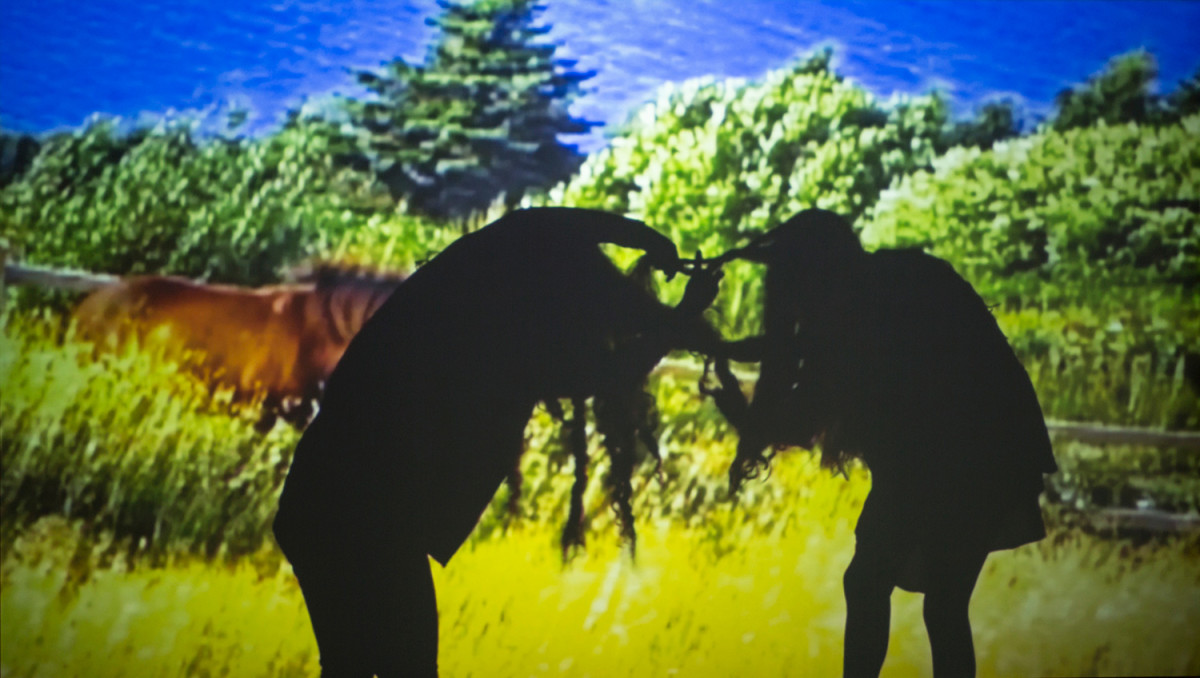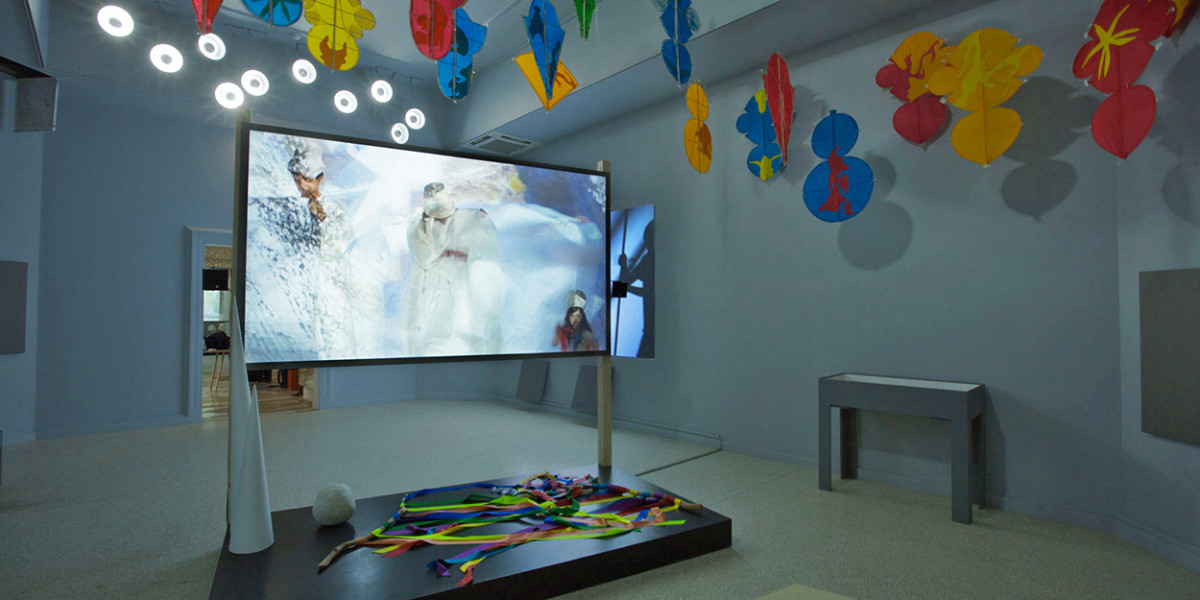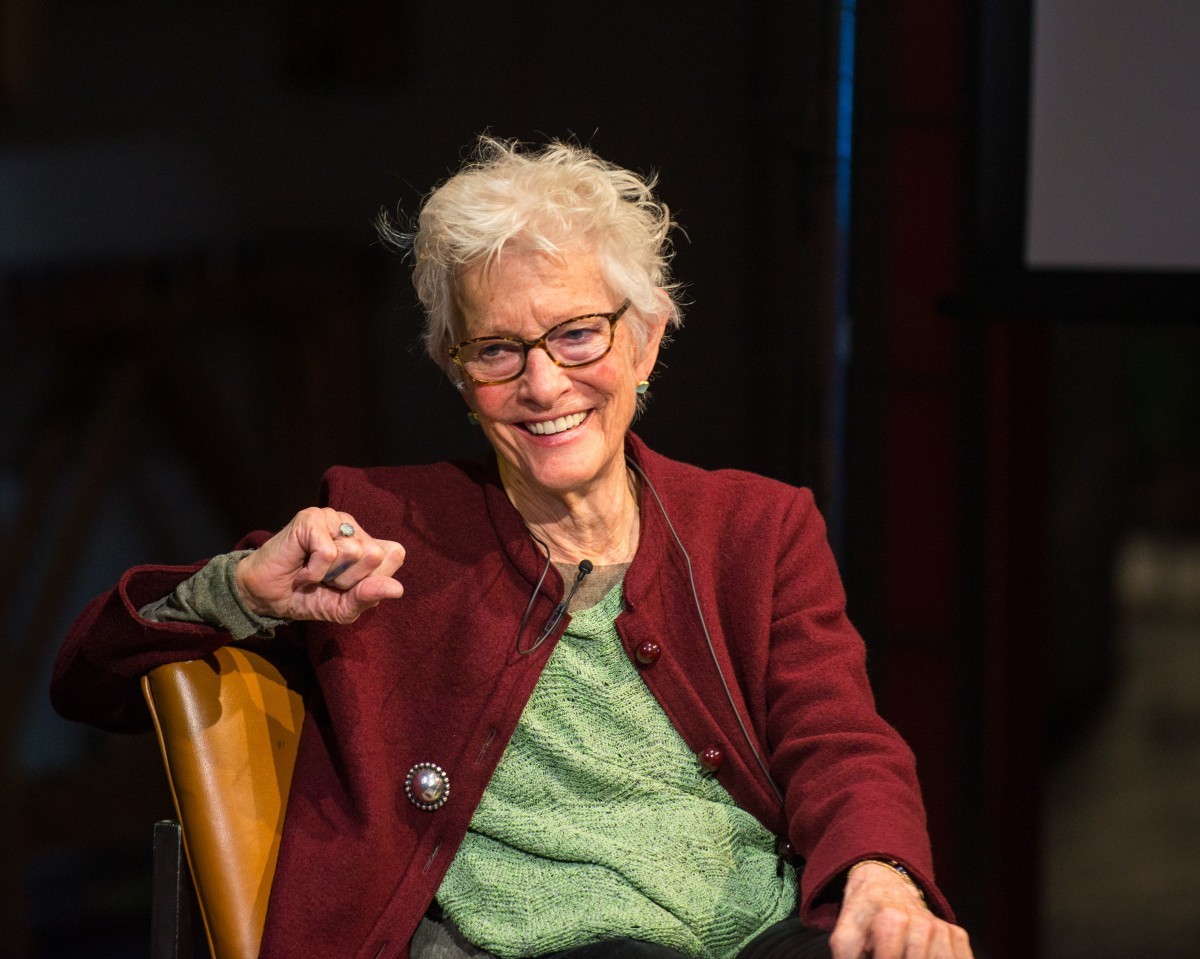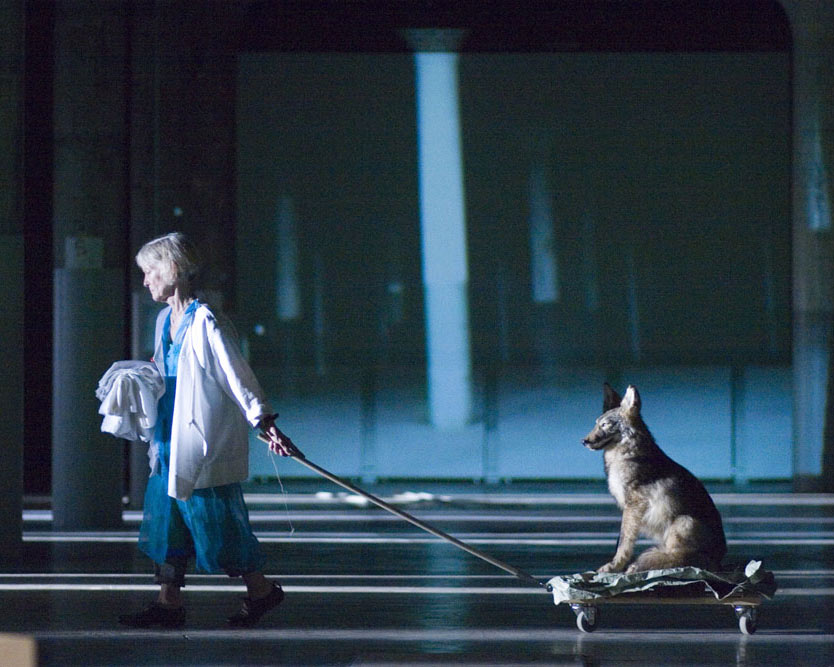Professor Emerita Joan Jonas taught at MIT from 1998–2014, and her pioneering performance, video, and installation works from 1960 onward have secured her a place in art history’s firmament. Influence, however, is a more personal and earthly matter; it occurs in the minds and studios of working artists, from workaday problem-solving to the heights of inspiration and everything in between.
To comprehend more fully Jonas’s extraordinary impact ahead of her work for the 2015 Venice Biennale’s US Pavilion, we asked several of her former MIT students and colleagues to share lessons she imparted that made an enduring impression on their artistic work. Jonas’s approach to her class, as these alumni recall, was characterized by openness, boundless curiosity, and vigorous exploration. In this interview series, Pia Lindman, Grady Gerbracht, Sohin Hwang, Rebecca Uchill and Sung Hwan Kim trace the lines of influence from their own art practices to the inimitable work of Joan Jonas.
SUNG HWAN KIM
Known for his interdisciplinary approach to video and performance art, Sung Hwan Kim earned a Master of Science in Visual Studies from MIT in 2003, where he was a teaching assistant for Jonas. Below are his reflections on her and her work.
What class(es) did you study under Joan Jonas and when?
I first met Joan at Harvard. Before going to MIT, she taught a class in the Visual and Environmental Studies Department in the fall of 1998. I didn’t take any classes with her at MIT (2001–03), but I was a teaching assistant for her performance class.
Do you remember what your expectations were? Was the subject something new to you, or were you already deeply engaged in your art studies?
When I first met her, I didn’t have any expectations other than to be involved in some kind of video- or filmmaking. I was majoring in math, and I couldn’t get into other popular film classes because film was not my concentration. Joan was teaching a class, the title of which contained the words, “fable” and “story.” Robb Moss, professor in the Harvard Visual and Environmental Studies Department, recommended that I take her class. I was eager to make my own videos. That year, I had made a comic strip called J Story in another class with a painter, Ellen Phelan. I chose five moments (this is a word that I took from Joan) from the comic strip in order to make the video J Story. So many people liked the video at the school screening that I was under the illusion that that moment could be the start of my filmmaking career. I didn’t come from a background that offered support for me to become an artist, so I was imitating ambitious people whom I had heard of. I remember asking Joan, as the class was finishing up for the semester, if she could be my friend because I didn’t know any artists. What does one say to that? I was naive on many different levels, although I was deeply involved with the subject in the class.
Are there any anecdotes you remember from the class, or from your fellow students, related to Joan Jonas’s instruction or critiques?
Although I was a cinephile, most videos that Joan showed from EAI or from the Harvard Film Archive were completely new to me. I was probably intimidated and also skeptical of those videos that took time only to puzzle me. One day, I was being overly critical with a video Joan presented, and she responded to this criticism by saying that I should be open-minded. Sometimes I react immediately to a simple instruction like that.
It helped me as I discovered that the language in Joan’s works came from films, not only so-called experimental films, but also feature films to which I was already exposed. Joan once told me that she learned almost everything about film from the Anthology Film Archives. I was studious, so I made the best use of the Harvard Film Archive by going through films and videos of artists unfamiliar to me. Joan and I (and I think most people in that class) liked one of the first Dogme films, Festen, that came out that year. There wasn’t much critique in class that I remember, but the fact that we all were looking with great interest at the same thing from the present moment gave me confidence.
Did you find some of the lessons applicable to other coursework (perhaps non-art related subjects)?
In my graduate studies at MIT, I curated my coursework based on my interests, so every semester was composed of tightly related classes. I cross-registered into a Harvard Comparative Literature course taught by John Hamilton, and took a Harvard Visual and Environmental Studies course with Hal Hartley. Mostly, I engaged in Independent Study through my department at MIT by having Joan Jonas, Joe Gibbons, Judith Barry, and Krystof Wodiczco as my advisors.
Was there any stand out piece of advice about the way to approach art making, a particular medium or process, or life in general?
There are probably many. I cannot quote Joan exactly, but she once said Liz LeCompte, the director of the Wooster Group, was proficient in working through and using qualities that the performers naturally already possessed. I am tamed by this idea.
How did her instruction affect your art practice, both then and now?
I think it is misleading to use the word instruction. There are instructive teachers, but I think Joan shows things, expects others to show things to her, and gives feedback. Sometimes a laugh is feedback, too. This is a different kind of teaching.
I think the most impactful instruction in art practice can come from seeing how another artist functions in the process. It is a vulnerable position to be exposed in the process of making. Not many artists let their process be seen, but if you happen to perform, you sometimes have to allow this being-seen before the work is finished. I was involved in Joan’s piece, Lines in the Sand. What is seen as a simple piece at the end takes days of organizing and reorganizing. Rhythmic arrangement of these movements shapes “the work.” Additionally, the participants must form human relationships beforehand and continue them afterwards. They—we—eat, drink, talk, and have misunderstandings. The process has many more dimensions than are shown in the final piece. It was wonderful to be inside the work of a great artist that others only get to see at the end. I also realized then that I enjoy being used.
How has your training with her continued to manifest itself in your studio?
In 2007, I lived in Amsterdam. Living in the Netherlands, I saw a great investment put into archives, which demonstrated a different cultural value from the [Korean] society in which I grew up.
When I worked on From the commanding heights…(2007), I was engrossed in the migration of film and video images in different countries. PAL, NTSC, Beta, S-VHS, Hi8, MiniDV, regions 1, 2, 3, and so on: these terms systematically and economically divided territories and histories.
Joan used Portapak in some of her videos where she is in a room playing with different objects. Endless variations in video technology followed that Japanese machine. From my standpoint, there was more to Joan’s images than discussed in much of the writings about her works. Carefully measured exuberance in Joan’s work gains depth with the knowledge of what is adjacent to it. For instance, I remember a photograph from Lines in the Sand, which shows a woman on a camel in Egypt—she told me once that the woman depicted is her grandmother. This is a fact she does not share, but also does not hide.
To buy one of the first generations of Sony cameras in the ’70s, to carry it from Japan to New York, to play with it in her Soho studio contrasted with a situation I portrayed in From the commanding heights… in which a Korean actress from the ’70s sits in her apartment during blackouts. This actress’s image survived in Korea through pirated tapes, distorted from replays. The only copy of the film clip I could get was from a private DVD store owned by a cinephile who digitized the VHS tapes from video rental stores, which were already obsolete in Korea by 2007. A movement to restore older films had just begun in Korea at that time, and it was impossible to find the film clip that I wanted to use. I was interested in the fact that some films, some stories, under certain contexts prolong their lives through copying, imitation, transfers, and migration. I found analogous relationship between cameras being moved from one place to another and myself being moved from one place to another for education, or “a cultural encounter.”
I imitated a shot from Joan’s video, Organic Honey’s Visual Telepathy, in one scene when I described the actress in the room. I found it eerie that video art is forming in one country while something is being erased in another. The camera is a magical device, but it is used under different terms throughout the world.
Written by Sharon Lacey, Arts at MIT






